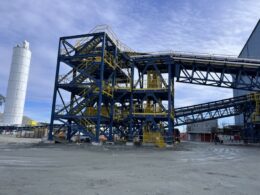Most of Hong Kong and other parts of southern China came to a near standstill on Friday as Super Typhoon Saola approached. The potential landfall of the typhoon caused many workers to stay at home, and the start of the school year was postponed in various cities. Hong Kong’s stock market trading was suspended, and over 400 flights were canceled or delayed, disrupting regional business and travel.
The Hong Kong Observatory raised a No. 8 typhoon signal – the third-highest warning in the city’s weather system – early on Friday. Saola, with maximum sustained winds of 210 kilometers (130 miles) per hour, is expected to be closest to Hong Kong on Friday night and Saturday morning, skirting about 50 kilometers (30 miles) south of the city’s shopping district Tsim Sha Tsui.
The observatory’s director, Chan Pak-wai, stated that there is a possibility of upgrading the alert to a No. 10 signal if the wind strength reaches hurricane levels. The No. 10 hurricane signal is the highest warning under Hong Kong’s system and was last used during the impact of Super Typhoon Mangkhut in 2018.
Chan anticipates that the winds will gradually weaken on Saturday as Saola moves away from Hong Kong. However, the observatory has warned of potential serious flooding in low-lying coastal areas, with the maximum water level potentially reaching that of Typhoon Mangkhut, which caused extensive damage to trees and buildings under construction in the city.
As heavy rains and strong winds were expected on Friday morning, approximately 190 people sought refuge at temporary shelters, and ferry and bus services were halted. Residents in low-lying areas took precautions by placing sandbags at their doors to prevent flooding. The government has already received reports of fallen trees and flooding cases. However, only one injury has been reported so far, with the individual seeking treatment at a public hospital during the typhoon period.
Weather Alert in Macao
Cross-Border Bridge Closure
The cross-border bridge connecting Hong Kong, Macao, and Zhuhai city will be closed in mid-afternoon as a precautionary measure.
Shenzhen Reacts to the Typhoon
In the technology and finance hub of Shenzhen, the emergency management bureau has ordered the suspension of work and businesses from late afternoon. This decision has been made due to the anticipated landfall of the typhoon in the city or its nearby areas on Friday night. All entry to highways in the city is banned starting from 7 p.m. until further notice, except for rescue crews.
Landfall Locations
China’s National Meteorological Center has predicted that Typhoon Saola could make landfall from Huidong County to Taishan city in Guangdong province, neighboring Hong Kong, between Friday night and Saturday morning. However, it is also possible that the storm could move west near the shore of central Guangdong.
Haikui Approaches Eastern China
Another storm, Haikui, is gradually moving towards the coastal areas of eastern China. Along with the influence of Typhoon Saola, parts of Guangdong, Fujian, and Zhejiang provinces will experience strong winds and heavy rains. According to a website run by China Meteorological Administration, some 100,000 people living in dangerous areas in Fujian have been relocated to safer places.
Saola’s Path
Saola passed just south of Taiwan on Wednesday before turning towards mainland China. The storm’s outer bands brought torrential rain to the island’s southern cities. Earlier this week, the typhoon also affected the Philippines, causing flooding and displacing tens of thousands of people in the northern part of the islands.
Recent Rainfall and Flooding in China
In recent months, China has experienced some of the heaviest rains and deadliest flooding in years across various regions. Outlying mountainous areas of the capital Beijing have been particularly affected, with scores of people losing their lives.





